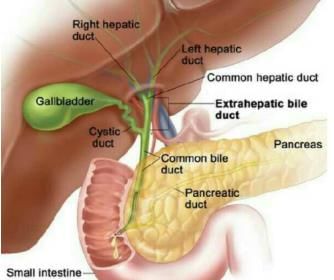NEET Exam > NEET Tests > Sample AFMC Biology Mock Test - NEET MCQ
Sample AFMC Biology Mock Test - NEET MCQ
Test Description
30 Questions MCQ Test - Sample AFMC Biology Mock Test
Sample AFMC Biology Mock Test for NEET 2025 is part of NEET preparation. The Sample AFMC Biology Mock Test questions and answers have been prepared
according to the NEET exam syllabus.The Sample AFMC Biology Mock Test MCQs are made for NEET 2025 Exam.
Find important definitions, questions, notes, meanings, examples, exercises, MCQs and online tests for Sample AFMC Biology Mock Test below.
Solutions of Sample AFMC Biology Mock Test questions in English are available as part of our course for NEET & Sample AFMC Biology Mock Test solutions in
Hindi for NEET course.
Download more important topics, notes, lectures and mock test series for NEET Exam by signing up for free. Attempt Sample AFMC Biology Mock Test | 50 questions in 30 minutes | Mock test for NEET preparation | Free important questions MCQ to study for NEET Exam | Download free PDF with solutions
Sample AFMC Biology Mock Test - Question 1
Which of the following belongs to the class of pepsin and trypsin?
Detailed Solution for Sample AFMC Biology Mock Test - Question 1
Detailed Solution for Sample AFMC Biology Mock Test - Question 2
Detailed Solution for Sample AFMC Biology Mock Test - Question 3
Detailed Solution for Sample AFMC Biology Mock Test - Question 4
Detailed Solution for Sample AFMC Biology Mock Test - Question 5
Detailed Solution for Sample AFMC Biology Mock Test - Question 6
Detailed Solution for Sample AFMC Biology Mock Test - Question 7
Detailed Solution for Sample AFMC Biology Mock Test - Question 8
Sample AFMC Biology Mock Test - Question 9
Which of the following cytoplasmic granules contain histamine?
Detailed Solution for Sample AFMC Biology Mock Test - Question 9
Sample AFMC Biology Mock Test - Question 10
Which of the following cells are phagocytic in nature ?
Detailed Solution for Sample AFMC Biology Mock Test - Question 10
Sample AFMC Biology Mock Test - Question 11
Letter S in the structural unit of ribosome denotes:
Detailed Solution for Sample AFMC Biology Mock Test - Question 11
Sample AFMC Biology Mock Test - Question 12
Secondary sexual characters in males develop under the influence of:
Detailed Solution for Sample AFMC Biology Mock Test - Question 12
Detailed Solution for Sample AFMC Biology Mock Test - Question 13
Detailed Solution for Sample AFMC Biology Mock Test - Question 14
Sample AFMC Biology Mock Test - Question 15
Prothrombin required for blood clotting is produced in:
Detailed Solution for Sample AFMC Biology Mock Test - Question 15
Detailed Solution for Sample AFMC Biology Mock Test - Question 16
Detailed Solution for Sample AFMC Biology Mock Test - Question 17
Detailed Solution for Sample AFMC Biology Mock Test - Question 18
Sample AFMC Biology Mock Test - Question 19
Which one of the following is associated with sex-linked inheritance?
Detailed Solution for Sample AFMC Biology Mock Test - Question 19
Detailed Solution for Sample AFMC Biology Mock Test - Question 20
Detailed Solution for Sample AFMC Biology Mock Test - Question 21
Sample AFMC Biology Mock Test - Question 22
The coelom is the cavity between the alimentary canal and body wall enclosed by:
Detailed Solution for Sample AFMC Biology Mock Test - Question 22
Detailed Solution for Sample AFMC Biology Mock Test - Question 23
Detailed Solution for Sample AFMC Biology Mock Test - Question 24
Detailed Solution for Sample AFMC Biology Mock Test - Question 25
Detailed Solution for Sample AFMC Biology Mock Test - Question 26
Detailed Solution for Sample AFMC Biology Mock Test - Question 27
Detailed Solution for Sample AFMC Biology Mock Test - Question 28
Detailed Solution for Sample AFMC Biology Mock Test - Question 29
Detailed Solution for Sample AFMC Biology Mock Test - Question 30
View more questions
Information about Sample AFMC Biology Mock Test Page
In this test you can find the Exam questions for Sample AFMC Biology Mock Test solved & explained in the simplest way possible.
Besides giving Questions and answers for Sample AFMC Biology Mock Test, EduRev gives you an ample number of Online tests for practice
Download as PDF





















